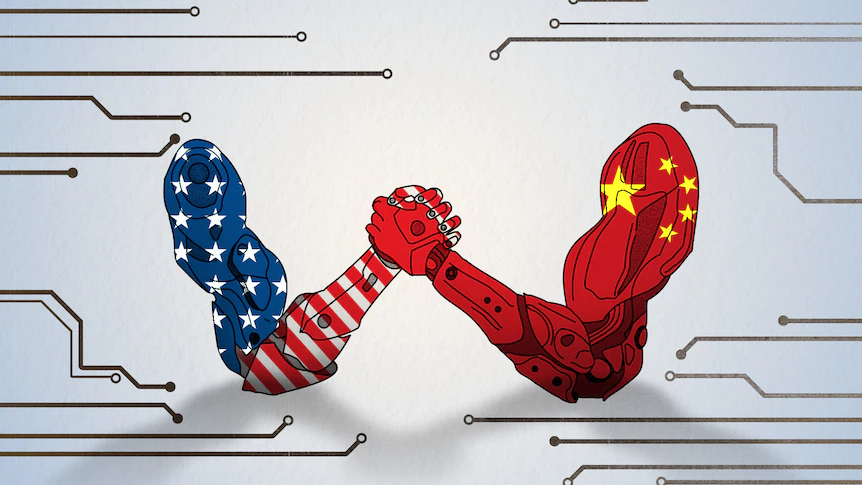
In recent years, the United States has faced an unprecedented challenge in safeguarding its technological advancements and intellectual property from a persistent and resourceful adversary: China. A series of high-profile cases have highlighted the extent of China’s efforts to acquire sensitive U.S. technology, often through illegal means. These incidents not only threaten America’s economic interests but also pose significant risks to national security.
The case of Chen Lin, a 65-year-old Chinese national who recently pleaded guilty to illegally exporting U.S. semiconductor equipment, exemplifies the ongoing struggle to protect critical technologies. Chen’s attempt to procure a wafer-cutting machine for Chengdu GaStone Technology, a company on the U.S. Entity List, underscores the lengths to which Chinese operatives will go to circumvent export controls.
Semiconductor technology, crucial for everything from consumer electronics to advanced military systems, has become a focal point in the technological rivalry between the United States and China. The incident involving Chen Lin is not isolated but part of a broader pattern of attempts to acquire cutting-edge semiconductor manufacturing capabilities, often in violation of U.S. laws and regulations.
The gravity of these technology transfers becomes even more apparent when considering their potential military applications. The case of Shih Yi-Chi, an electrical engineer sentenced for illegally exporting Monolithic Microwave Integrated Circuits (MMICs) to China, highlights the direct link between stolen technology and military advancement. MMICs, with their applications in missile guidance systems, fighter jets, and radar, represent the kind of dual-use technology that China eagerly seeks to enhance its military capabilities.
Furthermore, the arrest of a Chinese-born researcher for allegedly stealing technologies related to nuclear missile launch detection and tracking of ballistic and hypersonic missiles underscores the strategic nature of China’s espionage efforts. These incidents reveal a coordinated attempt to undermine U.S. military superiority and compromise national security.
FBI Director Christopher Wray’s statement that the bureau opens a new China counter-intelligence investigation “about every 12 hours” paints a stark picture of the scale and intensity of China’s espionage activities. This relentless pace of operations suggests a well-funded, state-directed effort to systematically acquire U.S. technological secrets.
The methods employed in these operations are diverse and sophisticated. From the use of intermediary companies to conceal the true end-users of sensitive equipment to the recruitment of researchers and engineers with access to cutting-edge technologies, China’s approach is multi-faceted and adaptive.
Beyond the immediate national security concerns, China’s technology theft has profound economic implications for the United States. The loss of intellectual property and trade secrets undermines the competitiveness of U.S. companies, potentially costing billions in lost revenue and jobs. Moreover, it threatens America’s leadership in key industries, particularly in the high-tech sector.
The semiconductor industry, a cornerstone of modern technology, is especially vulnerable. As China aggressively pursues semiconductor independence, often through illicit means, it threatens to disrupt global supply chains and could potentially leverage its position for economic or political gain.
The U.S. government has responded to these threats with increased regulatory scrutiny and enforcement actions. The Entity List, maintained by the Commerce Department’s Bureau of Industry and Security, serves as a critical tool in preventing the transfer of sensitive technologies to entities deemed to act contrary to U.S. national security interests.
However, as the cases of Chen Lin and others demonstrate, determined actors often find ways to circumvent these controls. This cat-and-mouse game between regulators and those seeking to illegally acquire U.S. technology highlights the need for constant vigilance and adaptation in export control measures.
A particularly concerning aspect of China’s technology acquisition strategy is its focus on human resources. By targeting researchers, engineers, and other technical experts, China seeks to tap into the knowledge and expertise that drive U.S. technological innovation. This approach not only jeopardizes specific technologies but also risks eroding the long-term innovative capacity of U.S. research institutions and companies.
Addressing the challenge posed by China’s aggressive pursuit of U.S. technology requires a comprehensive and coordinated strategy. This should include strengthening export control regulations and enforcement mechanisms, while simultaneously enhancing counterintelligence capabilities to detect and prevent technology theft. Investing in education and awareness programs for researchers and industry professionals is crucial to create a more vigilant workforce. Additionally, fostering closer cooperation between government agencies, academic institutions, and private sector entities can create a more robust defense against intellectual property theft. Finally, developing international partnerships is essential to create a united front against technology theft, as this is a global issue that requires collaborative solutions.
The persistent and sophisticated efforts by China to acquire U.S. technology represent a clear and present danger to both national security and economic prosperity. From semiconductors to missile defense systems, the breadth of technologies targeted underscores the strategic nature of this threat.
As the United States grapples with this challenge, it must balance the need for robust defense measures with the preservation of the open and collaborative environment that has long been the hallmark of American innovation. Striking this balance will be crucial in maintaining technological leadership and ensuring national security in the face of relentless adversarial efforts. The cases highlighted here serve as a stark reminder of the ongoing struggle to protect American ingenuity and strategic assets. As China continues its aggressive pursuit of technological parity and superiority, the United States must remain vigilant, adaptive, and resolute in safeguarding its technological edge – a cornerstone of its global leadership and national security.